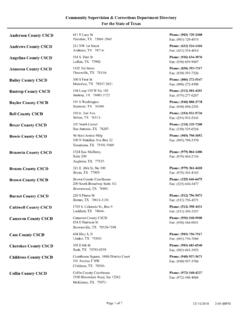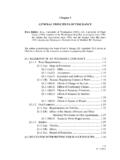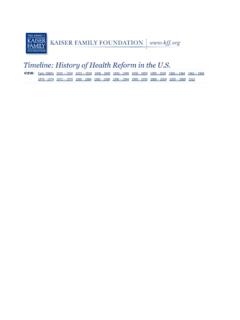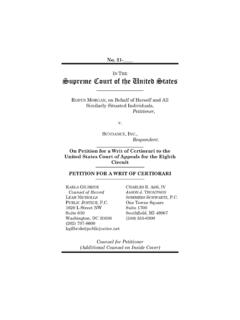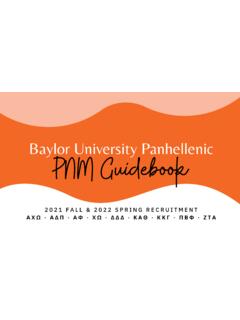Transcription of Teachers, Social Media, and Free Speech
1 1 Teachers, Social media , and free Speech Mandy Vasek Doctoral Student, University of Mary Hardin-Baylor Assistant Principal Woodway Elementary School 325 Estates Drive Waco, Tx 76512 Randy Hendricks, Ed. D. Assistant Professor of Educational Leadership University of Mary Hardin-Baylor 900 College Street UMHB Box 8017 Belton, Tx 76513 Spring 2016 Abstract Teachers across the United States routinely use Social media to improve communication with students and parents, enrich the classroom curriculum, and engage in professional conversations with peers. However, teacher use of Social media also has a dark side. media reports are replete with stories of teachers engaging in inappropriate Social networking with students.
2 In addition, teachers have also been disciplined for controversial Social media content even when students or other members of the school community are not the intended audience. The trending issue of teachers inappropriate or controversial use of Social media amplifies the need for school leaders to be cognizant of teachers First Amendment free Speech rights and the circumstances permitting school control. A framework is proposed for developing Social media policies that balance the First Amendment expression rights of teachers and pedagogical benefits of Social media with the need for appropriate limitations. Keywords: teachers, Social media , free Speech , Social media policy Introduction The use of Social media as a form of communication is increasing in all sectors of American society, including education (Morrison, 2014; Papandrea, 2012).
3 Teachers across the United States have embraced Social media as a pedagogical tool that improves communication with students and parents, enriches the 2 traditional classroom curriculum, and enhances professional development. Social media platforms, such as Facebook and Twitter, provide teachers with powerful instructional tools that foster collaboration and facilitate a cohesive learning community. Technology savvy educators use Social media and other internet-based tools to expand the learning space beyond the classroom and encourage student creativity (Papandrea, 2012; Tarantino, McDonough, & Hua, 2013). Clearly, Social media offers a pedagogical medium with tremendous upsides and is profoundly changing teaching and learning (Davis, 2010).
4 However, teacher use of Social media also has a dark side. Across the country, school leaders are grappling with a disturbing trend of teachers using Social media in professionally unseemly ways (Papandrea, 2012). While inappropriate teacher -to-student Social networking is a major concern for school leaders and policy makers, teachers have also been disciplined for controversial Social media content even when students or other members of the school community are not the intended audience (Decker & Eckes, 2014; Papandrea, 2012). The trending issue of teachers inappropriate or controversial use of Social media amplifies the need for school leaders to be cognizant of teachers First Amendment free Speech rights and the circumstances permitting school control.
5 In addition, school leaders must balance the competing goals of appropriate restriction with sufficient freedom so that the educational benefits of Social media are not unduly limited. teacher free Speech Rights Two seminal U. S. Supreme court decisions, decided long before the advent of Social media networks, form a solid foundation for understanding the parameters of First Amendment free Speech protection for public school teachers. Pickering v. Board of Education (1968) involved Marvin Pickering, who was a high school teacher in Will County, Illinois. Pickering raised the ire of the board of education when he wrote a letter to the editor of a local newspaper criticizing the board and superintendent for what he considered the disproportional allocation of funds toward the school district s athletic programs at the expense of academic programs.
6 The board determined that Pickering s comments were detrimental to the goals and efficient operations of the school district and terminated his employment. Pickering appealed, claiming the board s actions violated his free Speech rights guaranteed by the First Amendment. The court flatly rejected the argument that public school teachers relinquish their First Amendment free Speech rights as a condition of public sector employment. In finding for the teacher , the majority reasoned that the interest of the board in pursing educational goals and protecting the efficient operations of the school must be balanced with the employee s right to speak out on matters of public importance: The problem .. is to arrive at a balance between the interests of the teacher , as a citizen, in commenting upon matters of public concern and the interests of the State, as an employer, in promoting the efficiency of the public services it performs through its employees.
7 (Pickering v. Board of Education, 1968, p. 2) 3 While the Pickering decision had the effect of expanding public employees Speech rights, Co nnick v. Myers (1983) placed some limitations on those rights. Shelia Myers, an assistant district attorney in Orleans Parish, Louisiana, was transferred to a different section of the office by the district attorney, Harry Connick. Myers opposed the transfer and distributed a questionnaire to other employees in the district attorney s office to solicit their views regarding the office transfer policy, office moral, the need for a grievance committee, the level of confidence in supervisors, and the degree of pressure they felt to work on the district attorney s political campaigns.
8 After Connick dismissed Myers for insubordination, Myers filed suit alleging she was terminated due to Speech that fell within the parameters of First Amendment protection. The court employed the Pickering balancing test in upholding Myer s dismissal. The initial inquiry, based on the Pickering balance, was whether Myer s questionnaire addressed a matter of public concern or focused on her personal grievance with Connick. The question about coercion to work on political campaigns did touch upon a matter of public concern, the court concluded, but was insufficient, as a relatively minor part of the questionnaire, to offset the employer s interest in maintaining an efficient workplace (Hudson, 2002) . Writing for the 5-4 majority, Justice Byron White stated, Myers questionnaire touched upon matters of public concern in only a most limited sense; her survey, in our view, is most accurately characterized as an employee grievance concerning internal office policy.
9 The limited First Amendment interest involved here does not require that Connick tolerate action which he reasonably believed would disrupt the office, undermine his authority, and destroy close working relationships. Myers discharge therefore did not offend the First Amendment. (Connick v. Myers, 1983, pp. 11 -12 ) The combined effect of the Pickering and Connick decisions was to create a two-prong test for public school teachers free Speech challenges. To satisfy the threshold prong, the teacher must show that the offending Speech addresses a matter of public concern. The first prong being satisfied, the teacher must then show that his or her free Speech interests outweigh the school s efficiency in operations interest (Hudson, 2002).
10 The Connick (1983) court described matters of public concern as relating to political, Social , or other concern to the an employee s Speech addresses a matter of public concern must be determined by the content, form, and context of a given statement, as revealed by the whole record (pp. 7-8). Teachers commenting on matters of Social importance are more likely to enjoy First Amendment protection. Teachers commenting on matters of personal interest, including employment conditions, begin to stray beyond the reach of First Amendment protection. The second prong of the test requires the court to determine if the Speech in question interferes with the normal operations of the school or has a detrimental effect on close working relationships.










